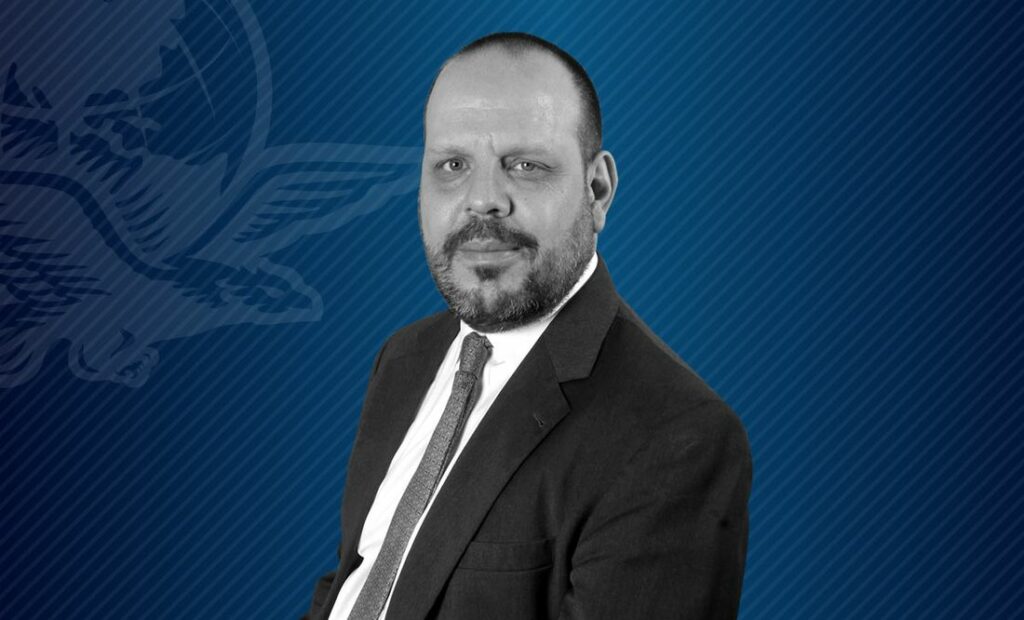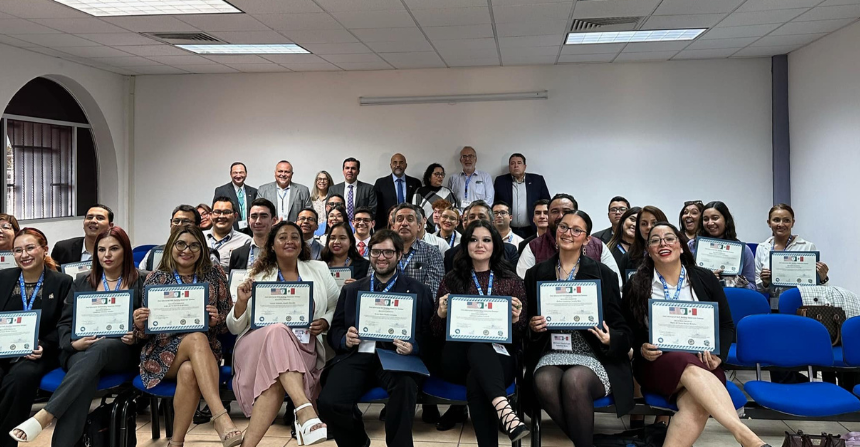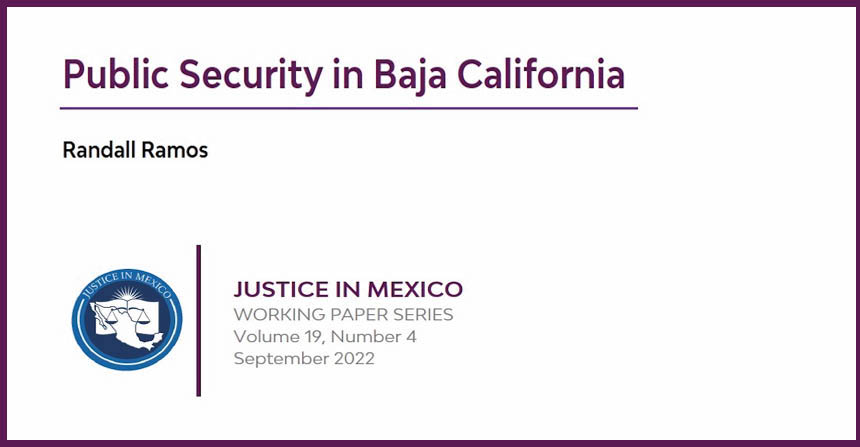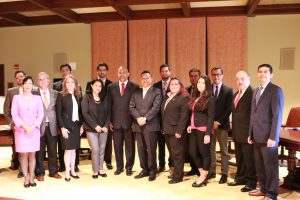
06/24/2016 (written by msmith) – Seven faculty and three students from the National Autonomous University of Mexico Law School (UNAM) were chosen to participate in a two-week study trip to learn about the U.S. criminal justice system. Called the Oral Advocacy Skill-building Immersion Seminar (OASIS), this study trip was made possible by a grant from the U.S. State Department’s Bureau of International Narcotics and Law Enforcement Affairs as part of the Mérida Initiative. During their two weeks in San Diego, the UNAM visitors participated in a series of workshops with OASIS Lead Trainer Janice Deaton as well as special sessions with Judge Chris Whitten, prosecutors Gregg McClain and José Castillo, public defenders Monique Carter and Mary Jo Barr, pretrial services officer Charlene Delgado, Judge Jeff Barton, Baja California Judge Luciano Angulo, Judge Luis Vargas, and Deputy Attorney General Anthony da Silva.
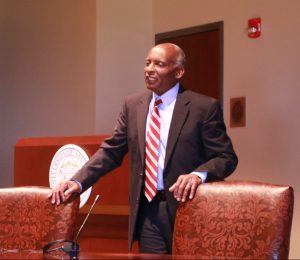
On their first official day, June 3rd, participants participated in an opening ceremony led by Dr. David Shirk (Director, Justice in Mexico), Dean Stephen Ferruolo (USD Law School) and Dean Noelle Norton (USD College of Arts and Sciences). Afterwards, participants listened to state prosecutor Gregg McClain who discussed the organization of the state prosecution system. McClain described the role of the prosecutor as well as the way the justice system is set up for transparency to give people confidence in the system. He mentioned that this transparency backfires sometimes since it allows for criticism from the public and from the media. Mr. McClain also spoke about a prosecutor’s responsibility to protect the public while also being fair to the defendant and the victim. Finally, Mr. McClain said his job was not just to put people away but to try to get to know the accused in order to determine if they are opportunistic or dangerous, driven by drugs or antisocial. Depending on the person and cause of the crime committed, Mr. McClain emphasized the broad range of sentences that can be supported by the prosecutor’s office including finishing their GED/college degree or going to a drug rehabilitation center.
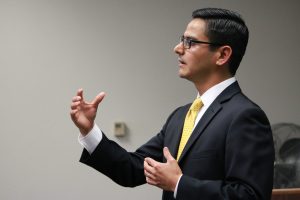
Federal prosecutor Jose Castillo spoke to participants in the afternoon about the differences between the U.S. Attorney’s office and the state prosecutor’s office. The U.S. Attorney’s Office represents the United States in federal cases, meaning they arise from federal law created by Congress. These cases are heard in federal courthouses throughout the country. State and local prosecutors (whether the district attorney, county/city prosecutor, or the state attorney general’s office), by contrast, represent the state for cases arising under state law, created by each state legislature. Occasionally, federal and state law may overlap in a certain area, allowing both federal and state prosecutors to pursue the case. Mr. Castillo also spoke about the 4th amendment (protects people from unreasonable searches and seizures by the government), 5th amendment (protection against self-incrimination), and 6th amendment (guarantees the rights of criminal defendants, including the right to a public trial without unnecessary delay, the right to a lawyer, the right to an impartial jury, and the right to know who your accusers are and the nature of the charges and evidence against you). Mr. Castillo also discussed briefly the juror system and the mandates under which jurors must operate.
On Saturday, June 4th, participants watched a specially edited version of the 1979 ABC documentary, “The Shooting of Big Man: Anatomy of a Criminal Case,” based on a Harvard law research project by Harvard Law School alum and Seattle criminal defense attorney Eric Saltzman. Professor Allen Snyder led discussions following the film focused on such topics as how the argument of self-defense was a key factor in determining the outcome of the case as well as the important role of preparing the defendant for cross-examination. Afterwards, OASIS Lead Trainer Janice Deaton guided participants in the first of two “Train the Trainer” sessions offering insights on how to be an effective teacher of oral trial skills and give a constructive critique to students.
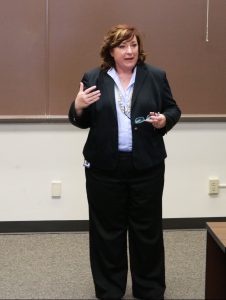
On June 6th, participants visited the downtown San Diego branch of the public defenders office and heard from two criminal defense attorneys, Mary Jo Barr and Monique Carter. Monique discussed the different level of crimes (infractions, misdemeanors, felonies), the process a public defender goes through with their client, as well as the life of a criminal case. Mary Jo Barr emphasized there is a misperception of the public defender’s only representing the poorest of the poor. Instead, Ms. Barr argued it is very difficult for people to retain private council and that the public defender’s office represents over 80% of people charged with crimes- both misdemeanors and felonies. In the afternoon, participants met with pretrial services officer Charlene Delgado. Pretrial services help prepare cases for trial in court. The process has three functions: to collect and analyze defendant information for use in determining risk, to make recommendations to the court concerning conditions of release, and to watch defendants while being released from secure custody during the pretrial phase. The function of these services is to reduce the jail population and also help people to get back to their normal lives after being released.
On June 7th, participants visited the San Diego Superior Court and were given the opportunity to experience what reporting to jury duty is like as well as sit in on various courtroom proceedings. Participants listened to the opening statements and presentation of the People’s case for a DUI trial in Judge Majors-Lewis courtroom and also observed various witnesses called in for their testimony in relation to a murder trial in Judge O’Neill’s courtroom. Participants also sat in on a mental health trial that focused on a sexual assault case in Judge David Gill’s room. Judge Gill also took a 20 minute recess in order to speak with the OASIS group. Participants were able to ask questions regarding his role as a judge, jury selection, as well as details about the specific case they had just heard. In the afternoon, participants met with Judge Luis Vargas to reflect on what they had observed and ask questions. Major topics discussed included the three strikes law in California that impacted sentencing and also limited the discretion of the judge in deciding a sentence, plea bargains and the prosecutor’s discretion in determining the plea bargain, questions during cross-examination, and objections.
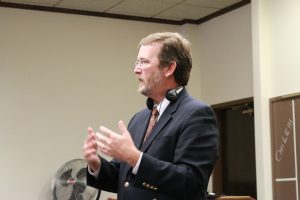
On June 8th, participants met with Arizona civil and tax court judge Chris Whitten who took participants through a mock readiness hearing. A readiness hearing is a hearing in front of the judge with the prosecutor and defense attorney present where the parties decide if the case is going to trial, continued or some plea bargain reached. Participants also heard from Judge Whitten on the limiting amount of power judges now have when prosecutors are given so much control with the plea agreements. Participants also met with prosecutor Lisa Rodríguez who discussed alternatives to incarceration. Ms. Rodríguez spoke at length about the Criminal Justice Realignment Act of 2011 as well as Prop. 47 that took effect in 2014. Both the Realignment Act as well as Prop. 47 transformed the criminal justice system by reducing the prison population, recidivism, and prison spending. Prop. 47 reduces simple drug possession crimes to misdemeanors, reduces many thefts to misdemeanors, requires resentencings, and overall has redirected state prison spending to 10% to Victim Trauma Recovery Centers, 25% to K-12, and 65% for grants for mental health, substance abuse, and diversion. Ms. Rodríguez also discussed pretrial programs including electronic monitoring in lieu of bail as well as post-sentencing custodial alternatives (county parole, home detention, residential reentry center, work furlough).
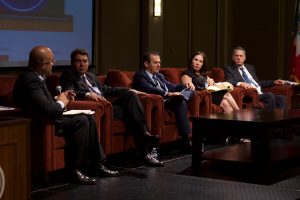
Participants attended “Promoting the Rule of Law in Mexico” international conference, co-hosted by Justice in Mexico and the USD School of Law, on June 10th. The conference consisted of opening remarks, multiple panels as well as a keynote luncheon. Opening remarks were given by Dr. David Shirk, Dean Stephen Ferruolo, and Justin Bird (vice president of Sempra Energy). Dr. Héctor Díaz Santana, director of Inter-Institutional Coordination of the Council for the Implementation of the Criminal Justice System’s Technical Secretariat (SETEC), inaugurated the conference by offering an overview of what brought about the reform and what have been the challenges to its implementation. The first panel, “From the Bench: Judges’ Take on Justice Reform,” was moderated by Dr. Shirk. The recurring themes included the newly acquired responsibilities of judges, the importance of training judges, and the role of the California Judges Association in allowing California judges the opportunity to collaborate with Mexican judges during this transition. Panelists included Mexican state supreme court justices Pablo Héctor González Villalobos (Chihuahua), Alejandro González Gómez (Michoacán), Hon. Teresa Sanchez Gordon (Los Angeles Superior Court), and Hon. Runston Maino (San Diego Superior Court). The second panel, moderated by Alejandro Rios Rippa, director of Corporate Ethics and Litigation, focused on the topic of anti-corruption efforts in Mexico. Panelists included Peter Ainsworth, senior anti-corruption counsel of the Department of Justice’s Criminal Division, Dr. Marco Antonio Fernández, associate researcher at México Evalúa, and Benjamin Hill, head of the new Specialized Ethics and Conflicts of Interest Prevention Office of the Mexican Federal Government. The last panel, “Improving the Administration of Justice,” moderated by Octavio Rodríguez Ferreira, Justice in Mexico program coordinator, reflected on the themes of capacity-building and training, U.S.-Mexico partnership, and institutional independence. Panelists included Miguel Sarre Inguíniz, professor at Instituto Tecnológico de México (ITAM), Ray Allan Gattinella, senior legal advisor for the Office of Overseas Prosecutorial Development of the Department of Justice, Luciano Angulo Espinoza, judge for the state of Baja California, and Robert Ciaffa, federal prosecutor. During the keynote luncheon, conference attendees first heard from William Ostick, U.S. consul general in Tijuana who gave some comments and introduced Dr. Alfonso Pérez Daza, advisor for the Federal Judiciary (Consejo de la Judicatura Federal).
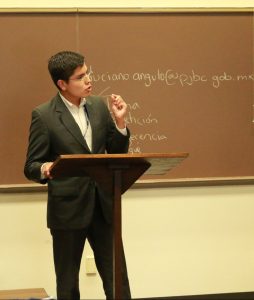
On June 11th, participants listened to Judge Luciano Angulo reflect upon the changing role of the judge and his experiences with unique cases that demonstrate the wide range of what is brought before him and the need for the judge to especially pay attention and provide protection to the victim in some cases. During the latter part of the day, participants attended the second “Train the Trainer” session, co-led by federal prosecutor Anthony Da Silva and OASIS Lead Trainer Janice Deaton. The session continued to guide participants through how to give successful critiques to someone practicing oral trial techniques. Each participant presented a part of an oral trial (opening statement, direct examination by plaintiff, cross-examination by defendant’s attorney, direct examination by defendant’s attorney, closing arguments) while another participant was responsible to critique the presentation afterward. After the critique was given, Ms. Deaton or Mr. Da Silva “critiqued the critique” and offered their perspective of how to improve giving criticism.
Finally, June 13th marked the conclusion of the OASIS San Diego study trip. Closing statements were made by Dr. David Shirk and Dr. Raul Juan Contreras Bustamante, dean of the UNAM Law School. Each emphasized the important role participants play in the future of building a successful criminal justice system in Mexico as well as the urgent need for their continued participation in teaching oral trial skills for future lawyers at UNAM. Following these comments, participants participated in a closing ceremony where each was given a certificate recognizing their time and study trip completion. In the afternoon, Anthony Da Silva invited participants to watch his argument of an appeal by a San Diego man convicted of rape and currently serving 37 yrs to life in prison. Da Silva is representing the People in this appeal, which is focused on the court’s decision to allow a book that was in the defendant’s possession into evidence of the trial. The defendant’s attorney argues the book caused prejudicial bias and should not have been allowed in court, while Mr. Da Silva is providing the information that established and maintains that the book was rightly admitted into evidence. The argument took place before a panel of three judges and their decision is to be made within 60 days from the day the oral argument took place. Mr. Da Silva arranged for the OASIS group to meet with the prosecutor and investigator that initially worked on this trial that led to a conviction. Participants were able to not only see how an appeal argument works, but to hear from Mr. Da Silva regarding what type of work goes into the preparation for an appeal.

